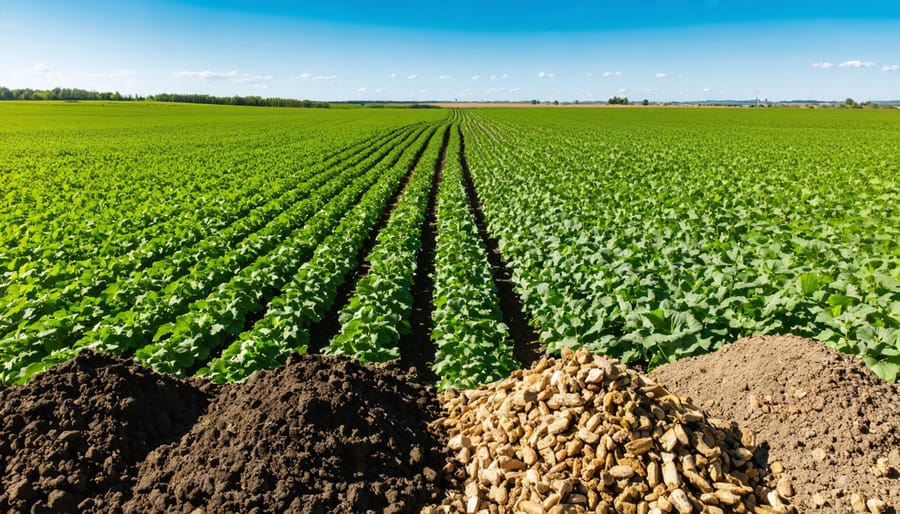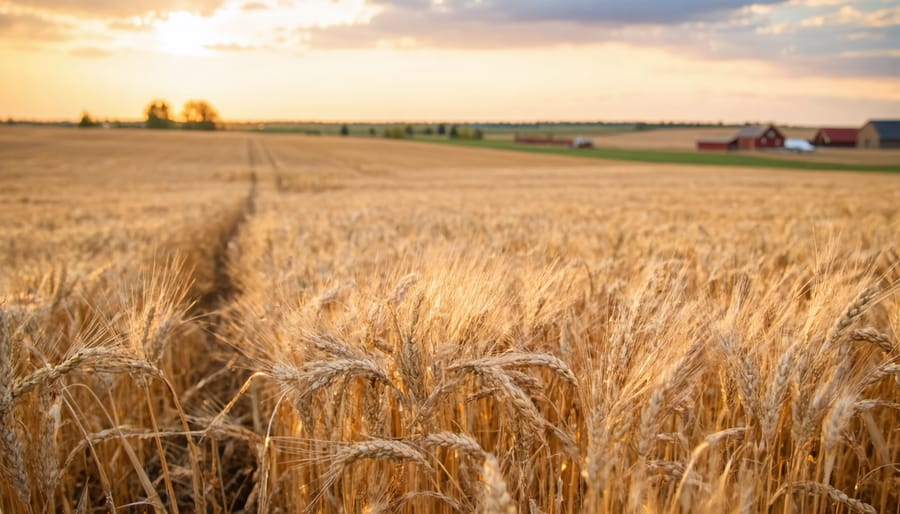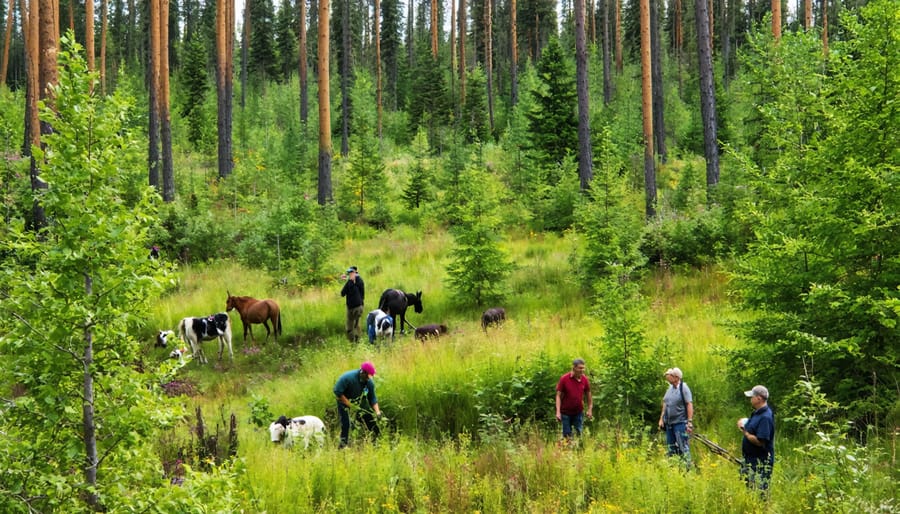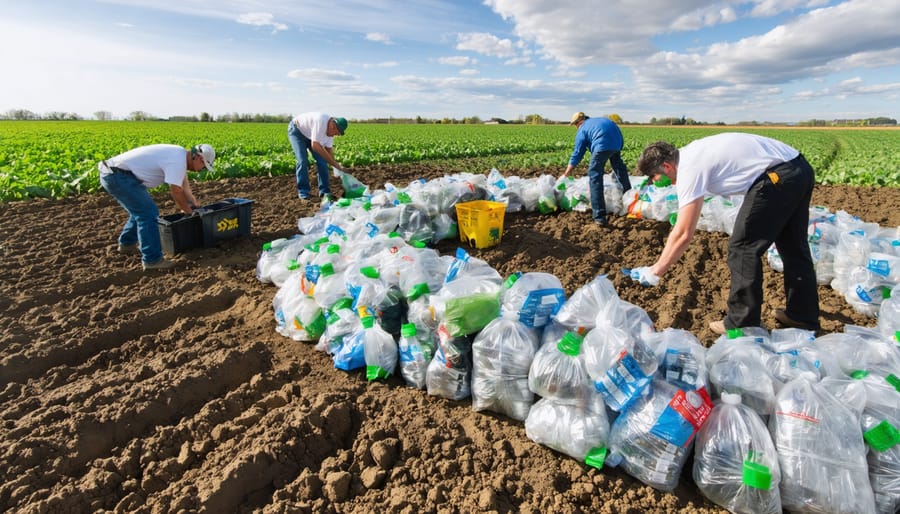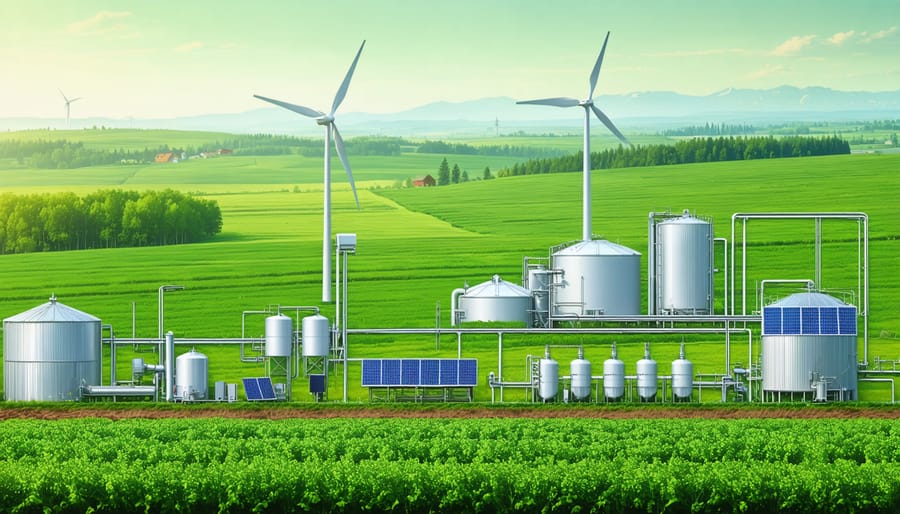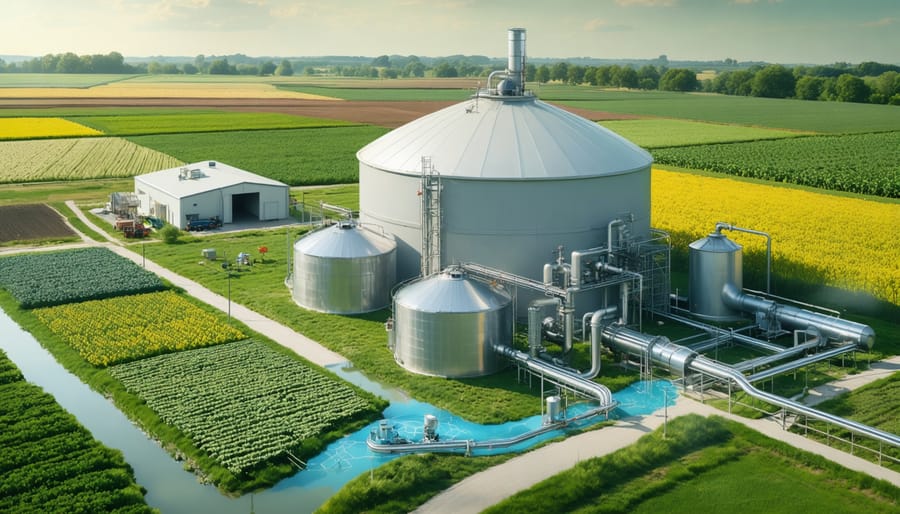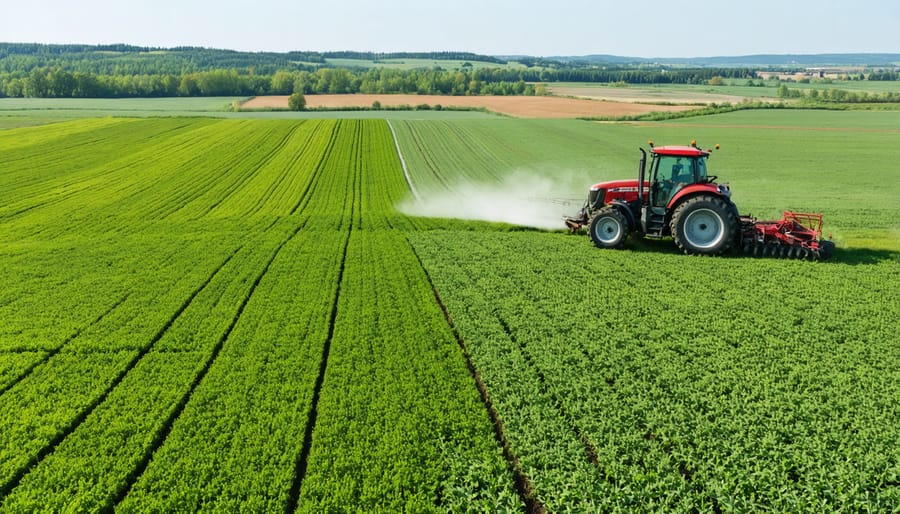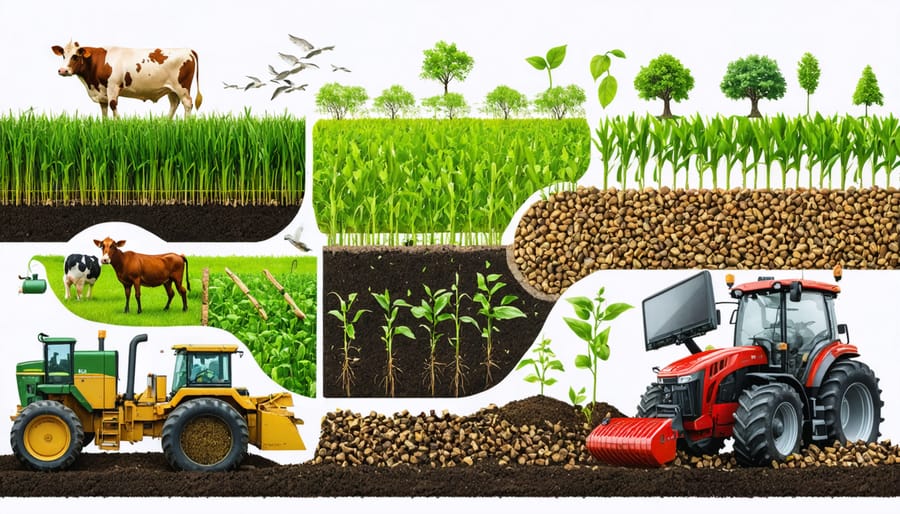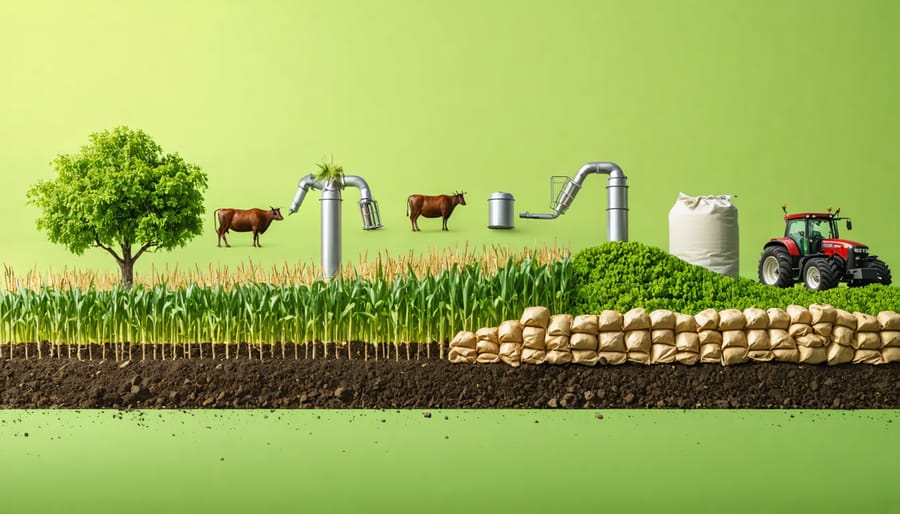Transform your organic farming operation with balanced 20-20-20 organic fertilizer, a powerhouse nutrient blend that delivers equal parts nitrogen, phosphorus, and potassium for optimal crop development. This precision-engineered formula revolutionizes sustainable fertilizer practices while meeting Canadian organic certification standards. Developed specifically for Prairie growing conditions, this triple-twenty organic solution provides rapid nutrient availability without compromising soil health or ecological principles. Recent field trials across Alberta demonstrate up to 25% yield increases in organic wheat and canola when implemented as part of a comprehensive fertility management system. For Canadian producers seeking to maximize production while maintaining organic integrity, 20-20-20 organic fertilizer represents the next evolution in balanced crop nutrition.
Understanding Organic 20-20-20: The Balanced Powerhouse
Breaking Down the Numbers
The 20-20-20 ratio in organic fertilizers represents a perfectly balanced blend of nitrogen (N), phosphorus (P), and potassium (K), with each nutrient making up 20% of the total formula. Achieving this precise balance through organic sources requires careful combination of multiple ingredients. Nitrogen typically comes from composted poultry manure and fish meal, while bone meal and rock phosphate contribute to the phosphorus content. Potassium is often derived from kelp meal and wood ash.
What makes organic 20-20-20 unique is how these natural ingredients work together to release nutrients gradually. Unlike synthetic alternatives, organic sources create a nutrient web in the soil that supports long-term fertility. Alberta farmers have found that this balanced ratio particularly suits crops with steady nutrient demands throughout the growing season, such as greenhouse vegetables and field crops during key growth stages.
Remember that while the NPK numbers are identical to synthetic versions, organic 20-20-20 delivers additional soil-building benefits through beneficial microorganisms and organic matter, supporting overall soil health beyond just nutrient delivery.
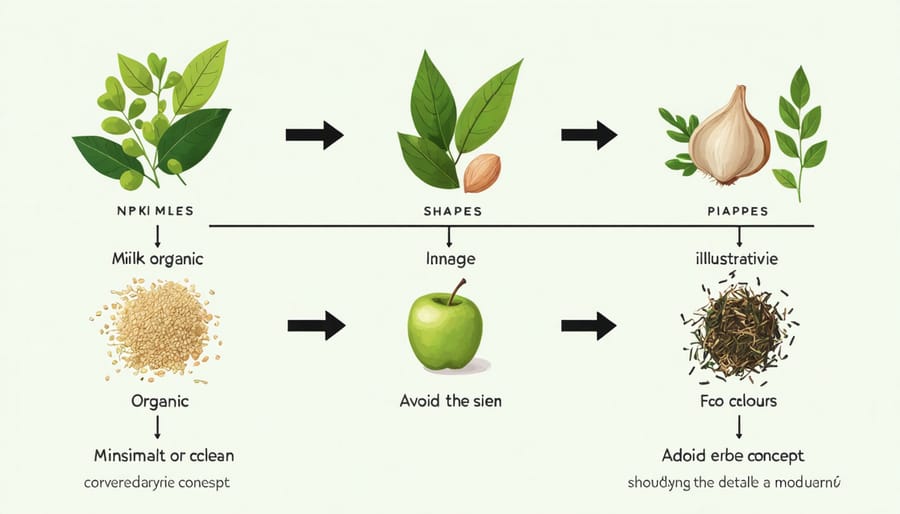
Natural vs. Synthetic: The Key Differences
While both natural and synthetic 20-20-20 fertilizers provide the same NPK ratio, their fundamental differences lie in their source materials and environmental impact. Natural organic versions derive their nutrients from composted materials, bone meal, and marine sources, supporting the process of building healthy soil through microbial activity.
Synthetic alternatives, though faster-acting, are manufactured through chemical processes. Organic options release nutrients more slowly, typically over 3-4 months, reducing nutrient leaching and promoting long-term soil health. They also improve soil structure and water retention, critical factors for Alberta’s varying climate conditions.
While synthetic fertilizers may be less expensive initially, organic alternatives offer additional benefits like increased soil organic matter and enhanced biodiversity. Many Alberta farmers report that despite the higher upfront cost, organic 20-20-20 provides better value through improved soil quality and reduced need for subsequent applications. The choice often depends on specific crop needs, soil conditions, and long-term agricultural goals.
Alberta Success Stories: Real Results from Local Farms
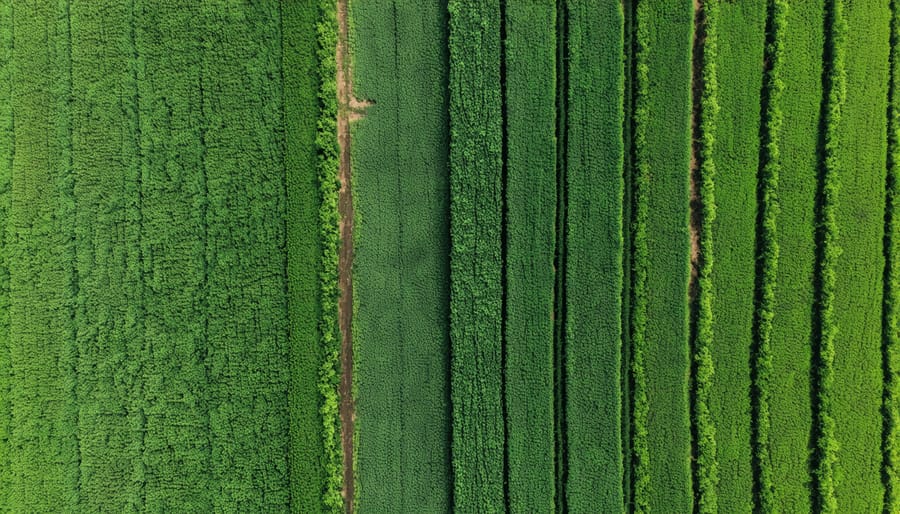
From Grain to Green: The Johnson Family Farm
Located just outside of Red Deer, Alberta, the Johnson Family Farm’s journey to organic farming began in 2018 when Sarah and Mike Johnson decided to transition their 400-hectare grain operation to sustainable practices. Their biggest challenge was maintaining yield while shifting away from synthetic fertilizers.
“We were skeptical at first about organic 20-20-20 fertilizer meeting our crops’ needs,” Sarah Johnson explains. “But after researching and consulting with local agricultural experts, we committed to the change.”
The Johnsons implemented a three-year transition plan, starting with test plots using organic 20-20-20 fertilizer on 40 hectares of wheat. They carefully monitored soil health through regular testing and adjusted application rates based on crop requirements. The balanced NPK ratio proved particularly effective for their wheat and barley crops.
By 2021, their entire operation had transitioned to organic practices. The results were remarkable: soil organic matter increased by 2.3%, beneficial insect populations flourished, and crop yields maintained 95% of their previous levels. Most importantly, their production costs decreased by 18% due to reduced input expenses.
“The key was patience and precise application timing,” Mike shares. “We applied the organic 20-20-20 in split doses throughout the growing season, which maximized nutrient uptake and minimized waste.”
Today, the Johnsons serve as mentors to other Alberta farmers interested in organic transition, hosting regular field days and sharing their experience with the community.
Market Garden Innovation: Red Deer Valley Organics
Located in the heart of Red Deer Valley, Alberta, Sarah and Mike Thompson’s organic market garden has become a beacon of innovation in sustainable fertilizer practices. Their 5-hectare operation, Red Deer Valley Organics, demonstrates how balanced organic nutrition can yield impressive results in intensive vegetable production.
In 2019, the Thompsons faced declining soil fertility and inconsistent crop yields. After consulting with local agricultural specialists, they implemented a comprehensive organic fertilizer program centered around a balanced 20-20-20 blend made from composted poultry manure, bone meal, and kelp derivatives.
“The results were remarkable,” Sarah shares. “Within one growing season, we saw a 40% increase in marketable produce, particularly in our heavy feeders like tomatoes and Brussels sprouts.” Their success hinges on careful soil testing and precise application timing, typically applying the balanced fertilizer through their drip irrigation system during peak growing periods.
The operation now supplies organic produce to four local farmers’ markets and three farm-to-table restaurants in central Alberta. Their approach has attracted attention from other market gardeners, leading to monthly workshop sessions where the Thompsons share their fertilizer management strategies.
“It’s about finding that sweet spot between soil health and productive farming,” Mike explains. “Our organic 20-20-20 program proves you don’t have to choose between sustainability and profitability.”
Practical Application Guide
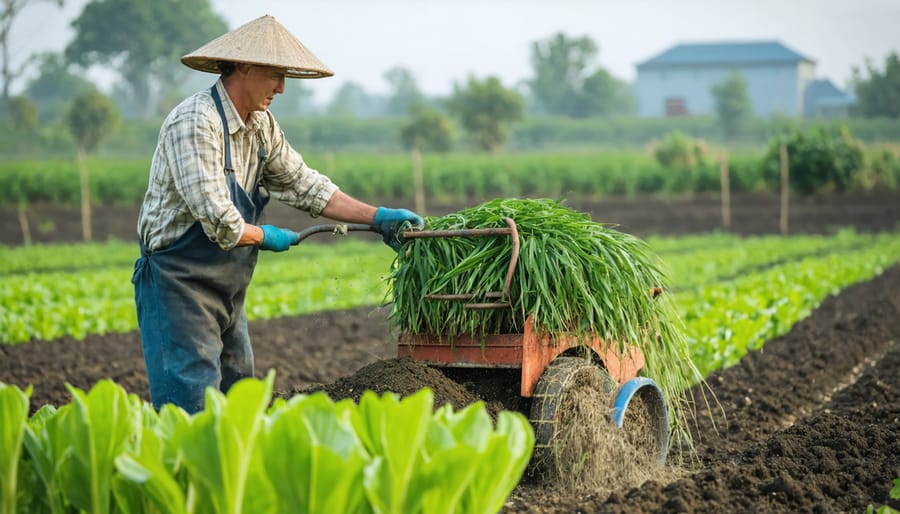
Application Rates and Timing
For optimal results with organic 20-20-20 fertilizer, timing and proper application rates are crucial components of earth-friendly fertilization methods. For vegetable gardens and field crops, apply 2-3 kg per 100 square meters during the initial growth stage, incorporating it into the soil before planting.
For established crops, dissolve 15-20 grams in 10 litres of water for foliar application every 14-21 days during the growing season. Reduce application frequency to once monthly during cooler periods. When applying to fruit trees and berry bushes, use 30-40 grams per mature tree, distributed evenly around the drip line in early spring and mid-summer.
For greenhouse operations, mix 1-1.5 grams per litre of water for regular fertigation through irrigation systems. Monitor plant response and adjust rates accordingly, particularly during peak growing periods. In Alberta’s climate, application timing should align with soil temperatures above 10°C for optimal nutrient uptake.
Remember to water thoroughly after dry applications and avoid applying during the hottest part of the day when using foliar sprays. For row crops, band application 5-8 cm below and to the side of seed placement maximizes nutrient availability while promoting root development. Always perform soil tests before initial application to establish baseline nutrient levels and adjust rates accordingly.
Integration with Existing Systems
Transitioning from conventional to organic fertilization requires careful planning and a gradual approach. Many Alberta farmers have successfully integrated organic 20-20-20 fertilizer into their existing systems by implementing circular farming practices that complement their current methods.
Start by soil testing to establish baseline nutrient levels. This helps determine the optimal application rate for organic 20-20-20 and identifies any potential deficiencies. Begin with a split application approach: use 70% conventional and 30% organic fertilizer in the first season, gradually increasing the organic portion over 2-3 growing seasons.
Consider implementing cover crops and crop rotation to support the transition. These practices enhance soil biology and improve nutrient cycling, making organic fertilizers more effective. Many Alberta farmers report success with fall application of organic 20-20-20, allowing time for nutrient release before spring planting.
Monitor crop response through regular tissue testing and visual assessment. Common indicators of successful integration include improved soil structure, increased earthworm activity, and consistent crop yields. Local agricultural extension services can provide guidance specific to your region and soil type.
Remember that organic fertilizers work differently than synthetic ones – they release nutrients more slowly and build long-term soil health. Patience during the transition period is key to achieving optimal results.
As we’ve explored throughout this article, organic 20-20-20 fertilizer represents a significant advancement in sustainable agriculture practices for Canadian farmers. The balanced nutrient profile offers remarkable versatility across different crops while maintaining strict organic certification standards. Alberta farmers who have implemented this fertilizer report improved soil health, increased crop yields, and better resistance to environmental stresses.
Looking ahead, the future of organic 20-20-20 in Canadian agriculture appears promising. Market trends indicate growing consumer demand for organically grown produce, creating opportunities for farmers to transition to organic practices. The fertilizer’s compatibility with precision agriculture technologies and its proven track record in various soil conditions make it an attractive option for both established organic farmers and those considering the switch.
Research conducted at Canadian agricultural institutions continues to validate the long-term benefits of organic 20-20-20, particularly in building soil organic matter and promoting beneficial microbial activity. As climate change presents new challenges, this fertilizer’s role in sustainable agriculture becomes increasingly vital.
For Alberta’s agricultural community, organic 20-20-20 represents more than just a fertilizer – it’s a tool for building resilient farming systems that benefit both the environment and farm profitability. By embracing this balanced approach to nutrition, Canadian farmers are well-positioned to meet the growing demand for sustainable food production while preserving our precious soil resources for future generations.

